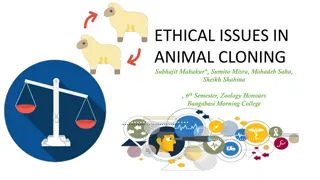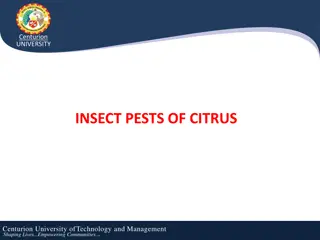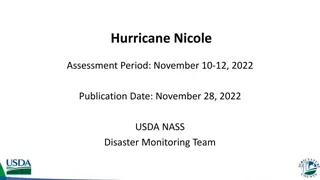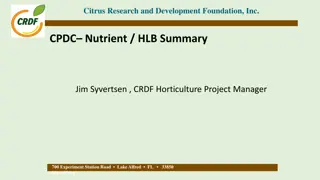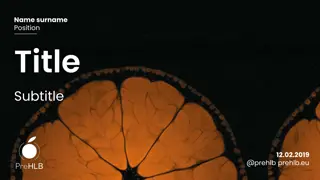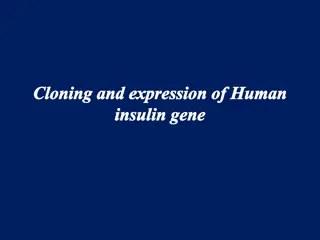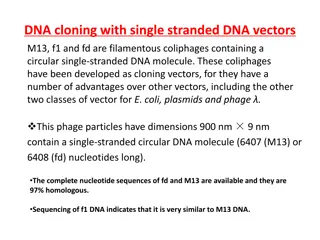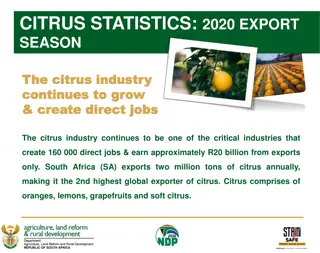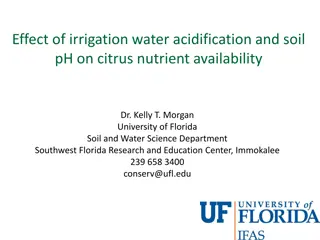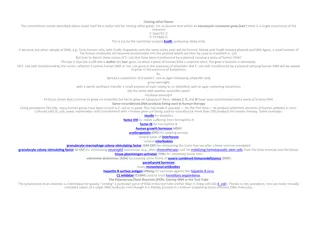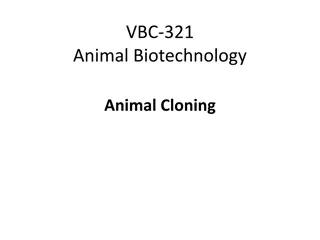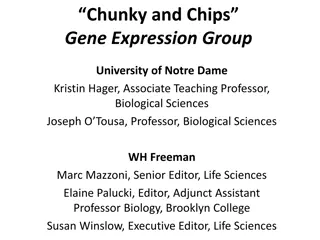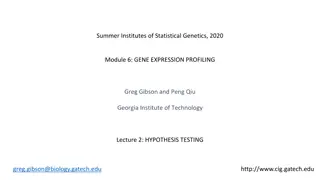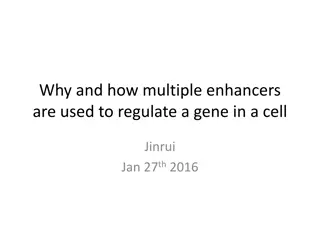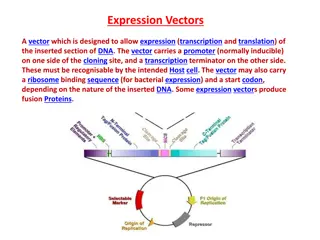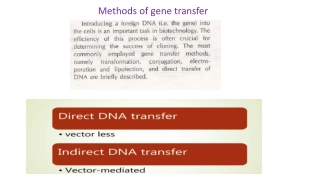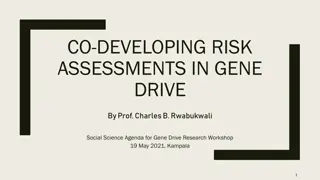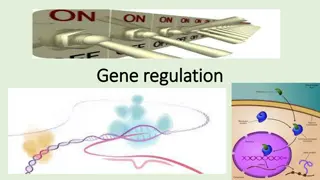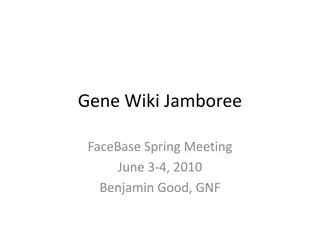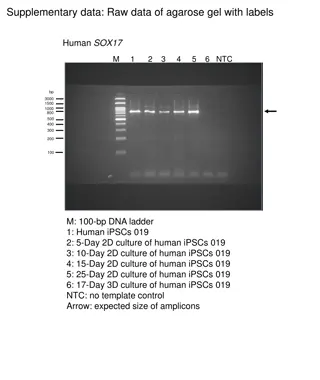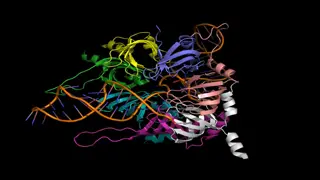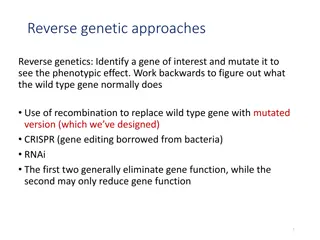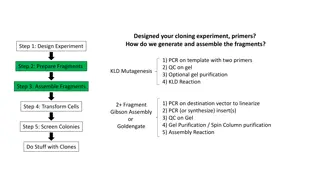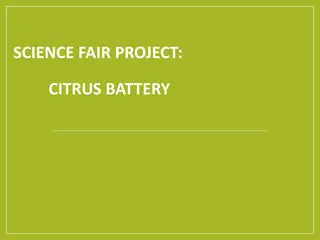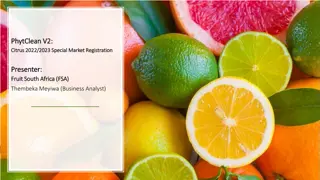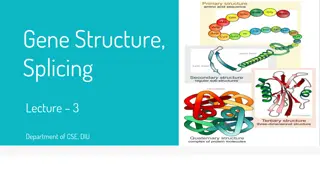Cloning the Cstps-1 Gene from Citrus sinensis for Valencene Production
In this project, the Cstps-1 gene from Citrus sinensis is being cloned to produce the enzyme Citrus Valencene Synthase (CVS) responsible for generating the fragrant valencene compound. The process involves DNA isolation from a Valencia orange, gene amplification, vector transformation, and testing for gene expression by introducing Farnesyl pyrophosphate (FPP). Successful detection of Valencene aroma indicates gene expression.
Download Presentation

Please find below an Image/Link to download the presentation.
The content on the website is provided AS IS for your information and personal use only. It may not be sold, licensed, or shared on other websites without obtaining consent from the author. Download presentation by click this link. If you encounter any issues during the download, it is possible that the publisher has removed the file from their server.
E N D
Presentation Transcript
Cloning the Cstps-1 gene from Citrus sinensis Cassidy Albertson Beth Anderson Orijit Kar
Citrus sinensis: The Valencia Orange Oranges are the most popular tree fruit, originating in South and Southeast Asia. Valencia oranges developed in the 19thcentury in California Used largely for juice production.
Biochemical goals In Citrus sinensis, the Cstps-1 gene codes for the production of the enzyme Citrus Valancene Synthase (CVS). In vivo, CVS reacts with farnesyl pyrophosphate (FPP) to produce the characteristically fragrant valencene (as well as 5-Epi-aristolochene). Valencene is one of the compounds responsible for the characteristic orange smell.
DNA Isolation We plan to buy a Valencia orange from a local grocer Tissue will be taken from the peel Using technique developed/demonstrated by Cheng et. al. in An Efficient Protocol for Genomic DNA Extraction from Citrus Species. Minimizes polysaccharide contamination Many fruits, especially citrus, have especially high polysaccharide levels Contamination hinders DNA manipulative techniques such as PCR
Amplification & Testing atgtcgtctg gagaaacatt 5 atgtcgtctg gagaaacatt tcgtcctact gcagatttcc atcctagttt atggagaaac ..1500 bp atttacaaag aggacgacgg ctatacgcat tcttacctaa ttaaagatca aattgcttct gtgctaggag accacgttcc attttga c tggtgcaagg taaaact 5 Amplify gene using PCR Insert into pGem T-Vector Ligate Resequence to check for potential introns Transform vector into E. coli to test for lethality
Transformation Cut out gene sequence from T-vector with EcoRI and SpeI restriction enzymes Insert into BioBrick-compatible vector with promoter Transform into competent E. coli Incubate for 24 hours at 37 C (optimal growth conditions) Selected Promotors: All inducible, available, and shown to work BBa_I13453 Induced by arabinose BBa_I0500 induced by L-arabinose BBa_I765001 induced by UV light
Testing for Gene Expression We will introduce Farnesyl pyrophosphate (FPP) into the growth media FPP serves as the substrate for the Valencene Synthase This enzyme-substrate complex forms Valencene. Valencene is a major component of the familiar and sweet citrus aroma. Detection of this odor in our culture will serve as a positive indication of gene expression.
References Chappell, Joe (2004), Valencene synthase a biochemical magician and harbinger of transgenic aromas. Trends in Plant Science, Vol. 9, No. 6, June 2004. Cheng, Yun-Jiang, et. al. (2003), An efficient protocol for genomic DNA extraction from CitrusSpecies. Plant Molecular Biology Reporter, 21: 177a-177g, June 2003. Sharon-Asa, et. al. (2003), Citrus fruit flavor and aroma biosynthesis: isolation, functional characterization, and developmental regulation ofCstps1, a key gene in the production of the sesquiterpene aroma compound valencene. The Plant Journal, 36: 664 674.


